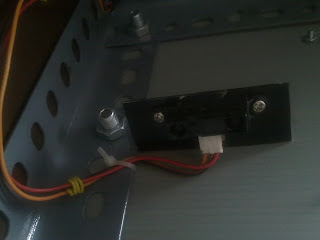Title : Testing and
demonstrating all the components and circuits of the Smart Chicken Coop.
Objective : To make sure all the component and
circuit are function well as been plan according to the flowchart.
Procedures :
1) The thermistor and humidity sensor operation had been shown in Video 1.
2) The water level sensor
operation had been shown in Video 2.
Results:
Video 1: Testing the bulb and fan
1) For the
bulb, when the temperature in the chicken coop was 30°C and below, the bulb
will turned ‘on’ to produce heat in the chicken coop. The bulb will remain
turned ‘on’ until the temperature inside the chicken coop was 30°C and above,
then it will turn ‘off’. It will remain turned ‘off’ until the temperature was 30°C.
2) For the fan, when the
humidity in the chicken coop was 59% and below, the fan was turned ‘off’. The fan
will remain turned ‘off’ until the humidity was 60% and above, then it will
turned ‘on’ to give an air circulation in the chicken coop because the
humidity was high.
Video 2: Testing the water pump
3) The water pump was turned ‘on’ and remaining refill the water in
the container inside the
chicken coop when the water was getting empty. At this time, the water level
sensor will detect the water in the container inside the chicken coop was in a
low level. It will stop refilled the water from main supply water outside the
chicken coop when the water level sensor detect the water was getting full. At this
time the water pump was turned ‘off' automatically.
Conclusion: Overall,
this project was successfully function according to the flowchart. The current problem
encountered was the bulb was blinking sometimes. This is because temperature is
always changing and unexpected. It was blinking when there was an interchanging
between 30°C and 31°C. The adapter that been used in this project are also not
enough supply current because when the water pump was turned ‘on’ the bulb and
LCD was blinking and unstable. This problem can be overcome in future by
changing the adapter that has high current than the existing that been used in
this project.































